White Goods Recycle in Furniture Disposal
Understanding White Goods Recycling
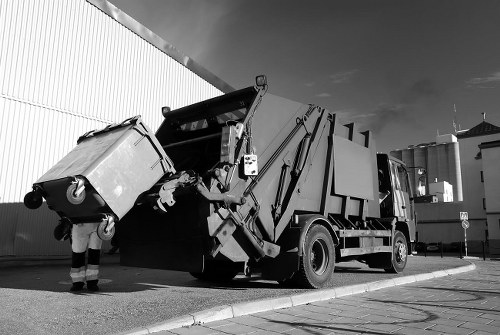
White goods, commonly referred to as major household appliances, include items like refrigerators, washing machines, ovens, and dishwashers. Proper disposal and recycling of these appliances are crucial for environmental sustainability and resource conservation.
Recycling white goods involves breaking down these large appliances into their constituent materials, which can then be reused or repurposed. This process helps in reducing landfill waste, conserving natural resources, and minimizing the environmental impact of manufacturing new products.
Moreover, recycling white goods can significantly decrease the carbon footprint associated with producing new appliances. By reusing metals, plastics, and other materials, manufacturers can lower energy consumption and reduce greenhouse gas emissions.
Benefits of Recycling White Goods
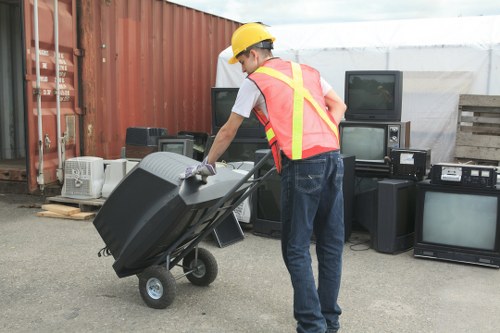
Recycling white goods offers numerous benefits, both environmental and economic. One of the primary advantages is the conservation of natural resources. Items like aluminum, copper, and steel can be recycled multiple times without losing their quality, reducing the need for new raw materials.
In addition to resource conservation, recycling helps in minimizing landfill usage. Large appliances take up considerable space in landfills and can take hundreds of years to decompose. By recycling, we can divert these bulky items from landfills, promoting a more sustainable waste management system.
Economically, recycling white goods can create jobs in the recycling and manufacturing sectors. It also reduces the cost associated with waste disposal and raw material procurement, potentially leading to lower prices for consumers.
Environmental Impact of Improper Disposal
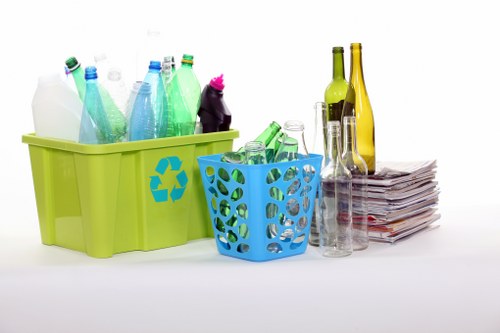
Improper disposal of white goods can have severe environmental consequences. Many appliances contain hazardous materials such as refrigerants, which can contribute to ozone layer depletion if released into the atmosphere.
Additionally, the metals and plastics in white goods can leach into soil and water sources, causing pollution and harming wildlife. Electronic components may also contain lead, mercury, and other toxic substances that pose significant environmental and health risks.
Moreover, the production of new appliances to replace improperly disposed ones leads to increased resource extraction and energy consumption, exacerbating environmental degradation.
Steps to Recycle White Goods Effectively
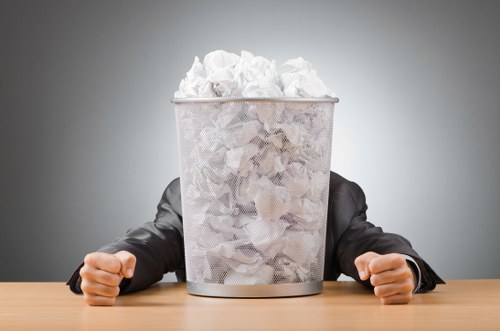
Recycling white goods effectively requires a systematic approach. Here are the essential steps to ensure proper recycling:
- Assessment: Determine the condition of the appliance. If it's still functional, consider donating or selling it.
- Preparation: Remove any personal belongings and ensure the appliance is safe to handle. Disconnect it from power sources and secure any loose parts.
- Collection: Contact local recycling centers or waste management services that accept white goods. Some manufacturers also offer take-back programs.
- Transport: Arrange for transportation, ensuring the appliance is handled carefully to prevent damage or spills of hazardous materials.
- Processing: The recycling facility will disassemble the appliance, separating metals, plastics, and other materials for reuse or proper disposal.
Challenges in White Goods Recycling
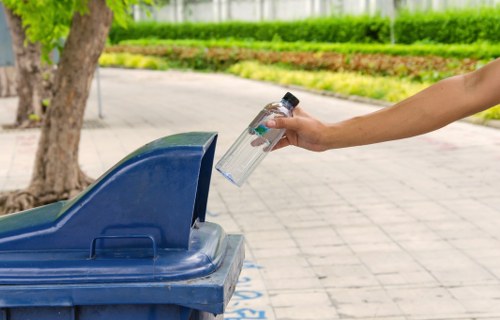
Despite the benefits, recycling white goods poses several challenges. The complexity of modern appliances, which often integrate various materials and advanced technologies, makes disassembly and material separation difficult.
Additionally, the presence of hazardous substances requires specialized handling and disposal methods, increasing the cost and complexity of the recycling process.
Consumer awareness and participation are also critical. Many individuals are unaware of the proper disposal methods or recycling options available for their appliances, leading to improper disposal practices.
Regulations and Policies
Government Initiatives
Governments worldwide have implemented regulations and policies to promote the recycling of white goods. These initiatives often include mandatory recycling targets, extended producer responsibility (EPR) schemes, and incentives for recycling businesses.
EPR schemes hold manufacturers accountable for the entire lifecycle of their products, encouraging them to design appliances that are easier to recycle and manage end-of-life disposal effectively.
Incentives such as tax breaks, grants, and subsidies support recycling infrastructure development and encourage consumers to participate in recycling programs.
Compliance and Standards
Compliance with environmental standards is crucial for effective white goods recycling. Standards such as the Waste Electrical and Electronic Equipment (WEEE) Directive in the European Union set guidelines for the collection, treatment, and recycling of electronic waste.
These standards ensure that recycling processes meet environmental and safety requirements, minimizing the impact on ecosystems and human health.
Adhering to international and regional standards also facilitates the trade of recyclable materials, promoting a global approach to white goods recycling.
Innovations in Recycling Technology
Advanced Material Separation
Technological advancements have significantly improved the efficiency of material separation in white goods recycling. Techniques such as magnetic separation, eddy current separation, and optical sorting enable precise and efficient extraction of metals, plastics, and other materials.
Robotic disassembly systems are becoming more prevalent, automating the process of breaking down complex appliances and enhancing productivity while reducing labor costs.
These innovations not only increase the yield of recyclable materials but also minimize contamination, ensuring higher quality outputs for reuse in manufacturing.
Eco-friendly Recycling Methods
Eco-friendly recycling methods prioritize minimizing environmental impact throughout the recycling process. For instance, using non-toxic solvents and energy-efficient machinery reduces the carbon footprint of recycling operations.
Implementing closed-loop recycling systems ensures that materials are continuously reused within the manufacturing cycle, promoting a circular economy.
Additionally, innovations such as biodegradable packaging for transporting recyclable materials further enhance the sustainability of white goods recycling.
Consumer Role in Recycling
Responsible Disposal Practices
Consumers play a pivotal role in the success of white goods recycling. Adopting responsible disposal practices ensures that appliances are recycled correctly, maximizing resource recovery and minimizing environmental harm.
- Research Disposal Options: Understand the available recycling and disposal options in your area, including local recycling centers and manufacturer take-back programs.
- Schedule Collection: Arrange for the collection or drop-off of your white goods, ensuring they are transported safely to recycling facilities.
- Educate Yourself: Stay informed about the materials and components of your appliances to facilitate effective recycling.
- Promote Recycling: Encourage friends and family to participate in recycling programs, fostering a community-oriented approach to waste management.
By taking these steps, consumers contribute to a more sustainable environment and support the growth of the recycling industry.
Choosing Reputable Recycler
Selecting a reputable recycler ensures that your white goods are handled responsibly and in compliance with environmental standards. Look for recyclers who are certified and adhere to industry best practices.
Verify that the recycler has the necessary licenses and permits to operate, and inquire about their recycling processes and facilities.
Choosing a trustworthy recycler not only guarantees proper disposal but also supports businesses that prioritize sustainability and environmental responsibility.
Economic Aspects of Recycling
Cost Benefits
Recycling white goods can result in significant cost savings for both consumers and businesses. Consumers may receive discounts or incentives for recycling their old appliances, reducing the cost of purchasing new ones.
Businesses benefit from lower raw material costs by utilizing recycled materials, leading to increased profitability and competitive advantage.
Moreover, the recycling industry creates jobs and stimulates economic growth, contributing to the overall economy.
Market for Recycled Materials
The market for recycled materials from white goods is robust and continuously expanding. Metals like aluminum, copper, and steel are in high demand for manufacturing new appliances, construction materials, and electronics.
Plastics recovered from white goods are used in various industries, including automotive, packaging, and consumer goods, fostering a sustainable supply chain.
The growing emphasis on sustainability and resource efficiency drives the demand for recycled materials, ensuring the economic viability of white goods recycling.
Future of White Goods Recycling
Trends and Predictions
The future of white goods recycling is promising, with several emerging trends shaping the industry. Advances in recycling technology are expected to enhance material recovery rates and reduce processing costs.
Sustainable product design is gaining traction, encouraging manufacturers to create appliances that are easier to disassemble and recycle, further facilitating the recycling process.
Additionally, increased consumer awareness and regulatory support will drive higher participation rates in recycling programs, promoting a circular economy and sustainable resource management.
Circular Economy Integration
Integrating white goods recycling into the circular economy model ensures that resources are continually reused, reducing waste and promoting sustainability. This approach emphasizes designing products with their end-of-life disposal in mind, facilitating efficient recycling and material recovery.
Collaboration between manufacturers, recyclers, and consumers is essential to establish a seamless flow of materials within the circular economy framework.
By adopting circular economy principles, the white goods industry can achieve long-term sustainability and resilience, addressing environmental challenges while meeting consumer needs.
Call to Action
Take the Next Step
Recycling white goods is a simple yet impactful way to contribute to environmental sustainability and resource conservation. By choosing to recycle your old appliances, you play a vital role in reducing waste and promoting a greener future.
Don’t let your old white goods take up valuable space or harm the environment. Contact us today to schedule a pickup or learn more about our comprehensive recycling services. Let’s work together to make a positive difference!